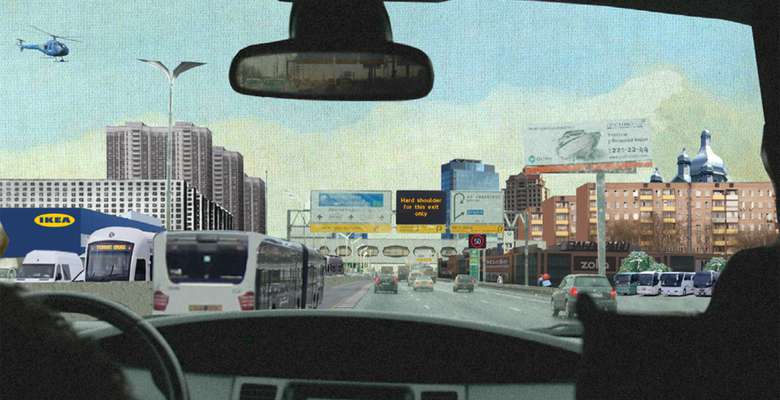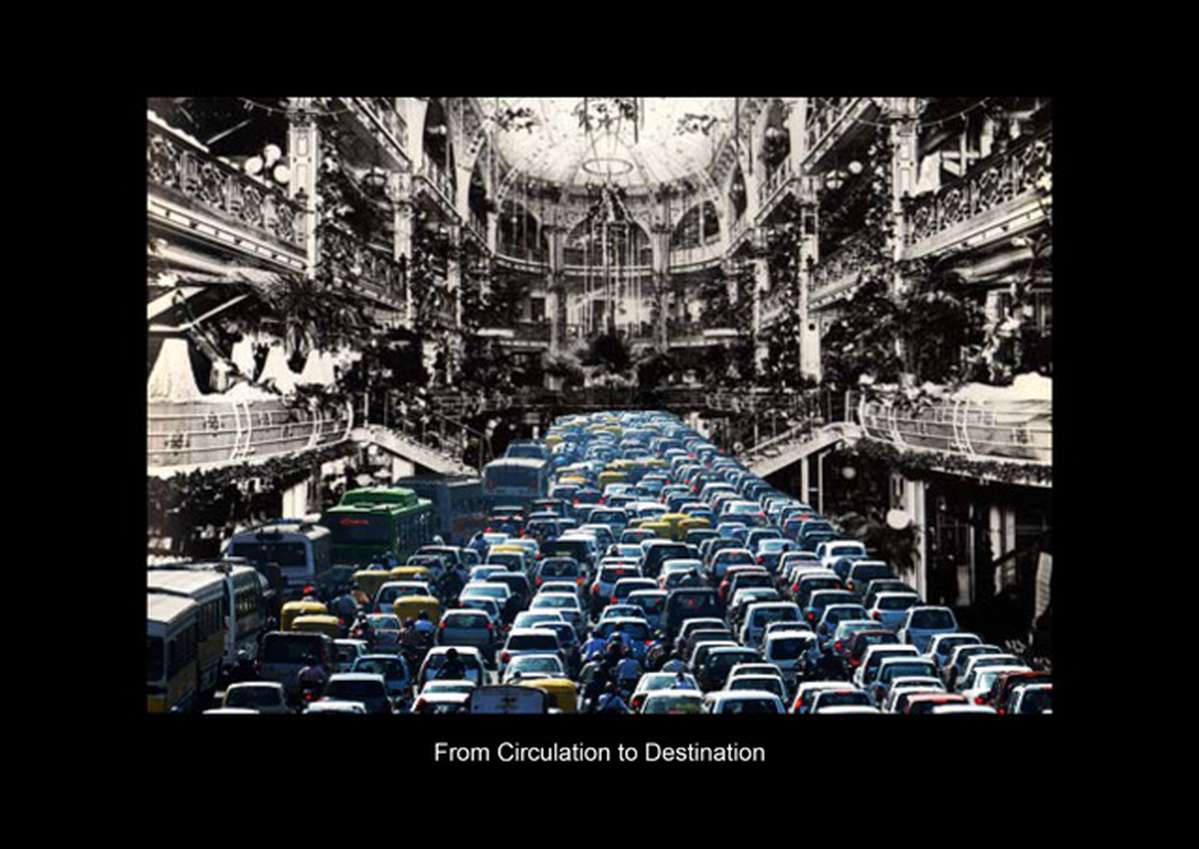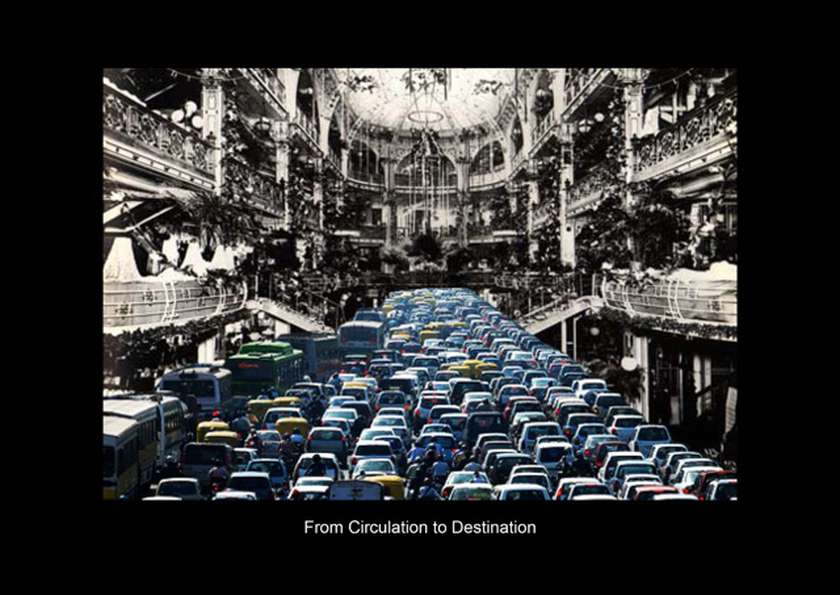Idea by
Roel van Herpt & Giulio Margheri
RULIO
Call for ideas 2016
On the Move
On the Move

Roads, railways, airports—all are built to fulfil our need to travel from A to B, or to move our stuff around. But infrastructures are more than practical tools for movement. As they help us to move, we are attracted by infrastructures and as a result more and more activity unfolds around them. Roads become shopping streets for cars, railways turn into food courts annex shopping malls and airports transform into mini cities where one can eat, drink, shop, work and sleep. And as we become more mobile than ever—think cheap tickets and cars available to all—infrastructures become central spaces in our lives.
The cultural analysis of infrastructures gives insights that are crucial for planning our future cities. Most cities are developing around key infrastructures like airports and ring roads. Understanding human activity at infrastructures—why people go there, what works and what can be improved?—tells us in which direction our cities should develop.

Roads initially built for better traffic circulation, transform into congested destinations in themselves.

A road becoming a shopping street for cars becoming an urban boulevard.
On the Move
On the Move

Roads, railways, airports—all are built to fulfil our need to travel from A to B, or to move our stuff around. But infrastructures are more than practical tools for movement. As they help us to move, we are attracted by infrastructures and as a result more and more activity unfolds around them. Roads become shopping streets for cars, railways turn into food courts annex shopping malls and airports transform into mini cities where one can eat, drink, shop, work and sleep. And as we become more mobile than ever—think cheap tickets and cars available to all—infrastructures become central spaces in our lives.
The cultural analysis of infrastructures gives insights that are crucial for planning our future cities. Most cities are developing around key infrastructures like airports and ring roads. Understanding human activity at infrastructures—why people go there, what works and what can be improved?—tells us in which direction our cities should develop.

Roads initially built for better traffic circulation, transform into congested destinations in themselves.

A road becoming a shopping street for cars becoming an urban boulevard.